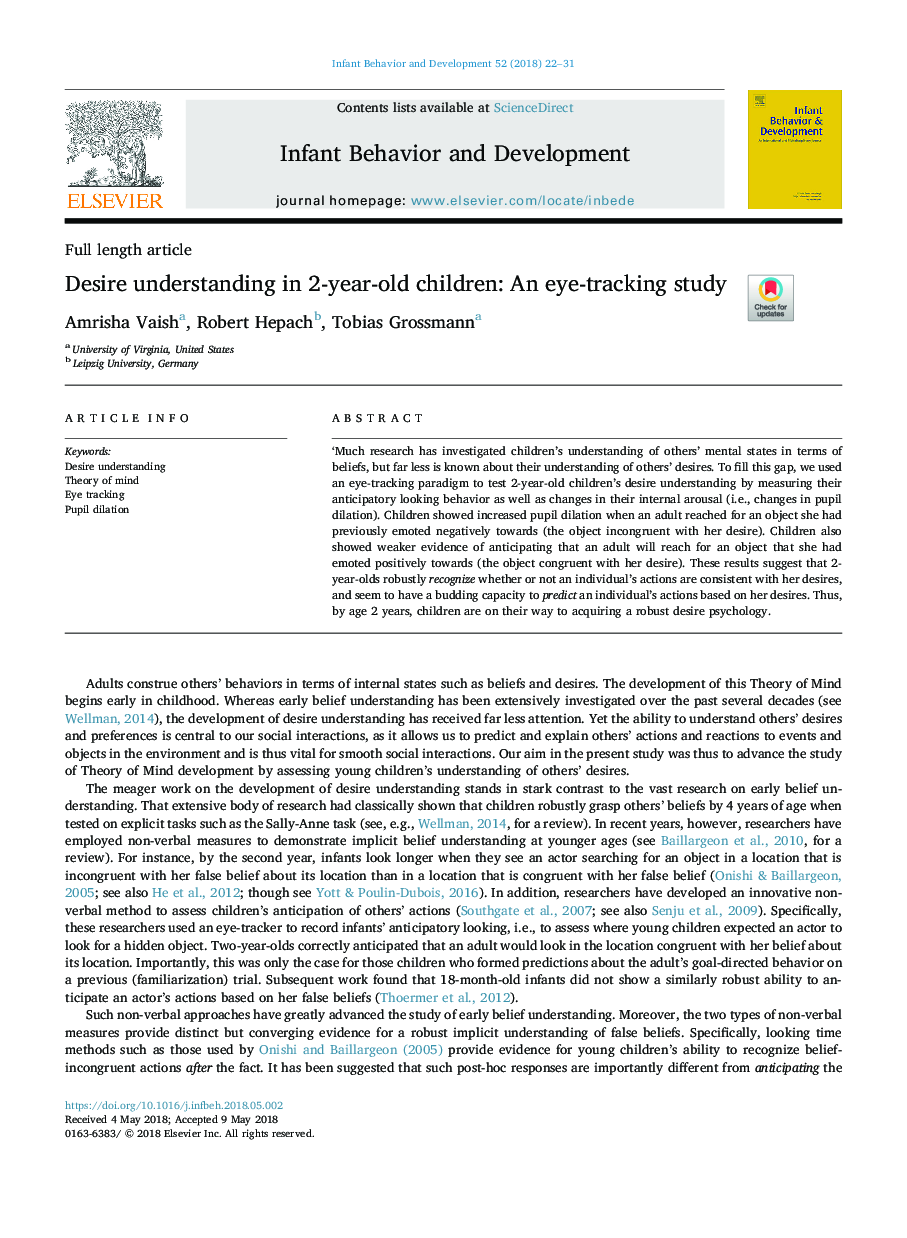| Article ID | Journal | Published Year | Pages | File Type |
|---|---|---|---|---|
| 7272847 | Infant Behavior and Development | 2018 | 10 Pages |
Abstract
'Much research has investigated children's understanding of others' mental states in terms of beliefs, but far less is known about their understanding of others' desires. To fill this gap, we used an eye-tracking paradigm to test 2-year-old children's desire understanding by measuring their anticipatory looking behavior as well as changes in their internal arousal (i.e., changes in pupil dilation). Children showed increased pupil dilation when an adult reached for an object she had previously emoted negatively towards (the object incongruent with her desire). Children also showed weaker evidence of anticipating that an adult will reach for an object that she had emoted positively towards (the object congruent with her desire). These results suggest that 2-year-olds robustly recognize whether or not an individual's actions are consistent with her desires, and seem to have a budding capacity to predict an individual's actions based on her desires. Thus, by age 2 years, children are on their way to acquiring a robust desire psychology.
Related Topics
Life Sciences
Neuroscience
Behavioral Neuroscience
Authors
Amrisha Vaish, Robert Hepach, Tobias Grossmann,
